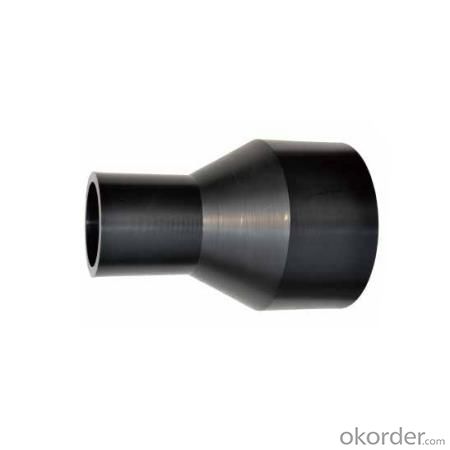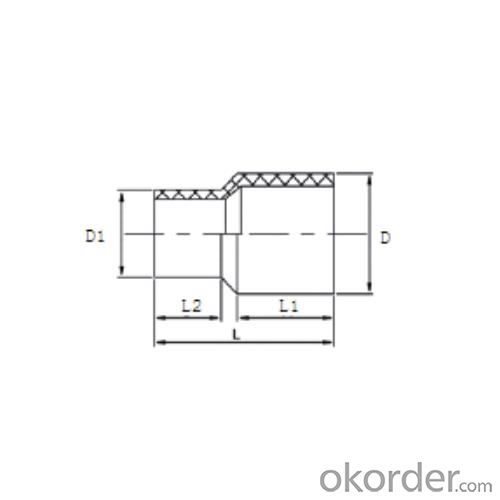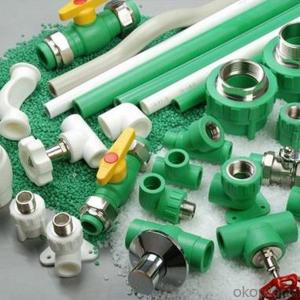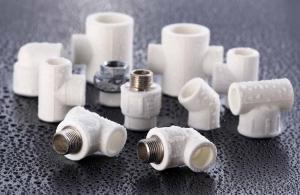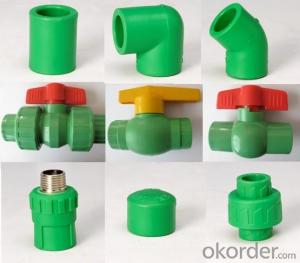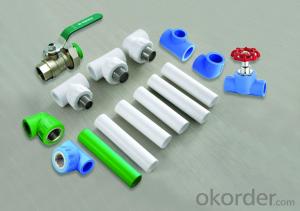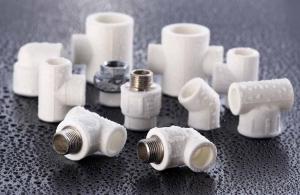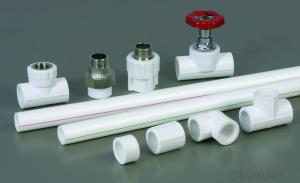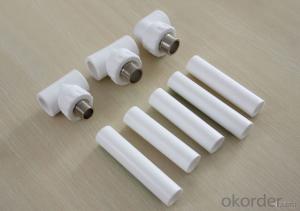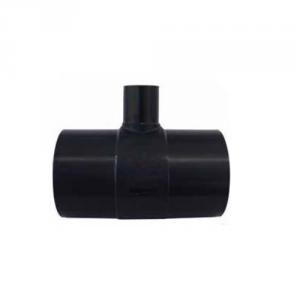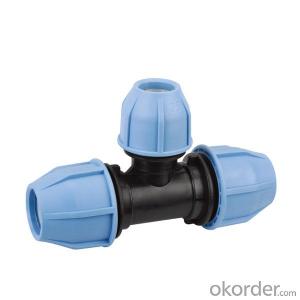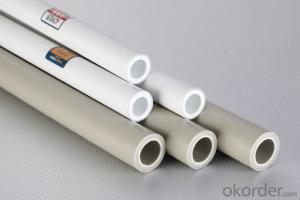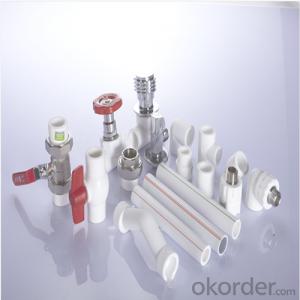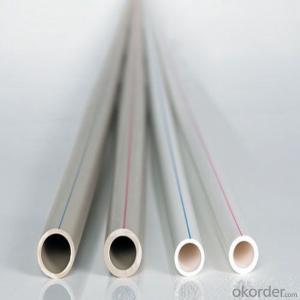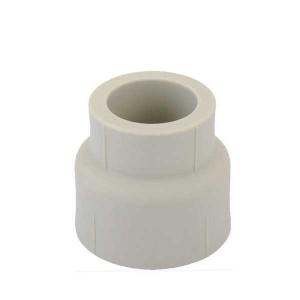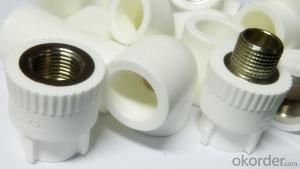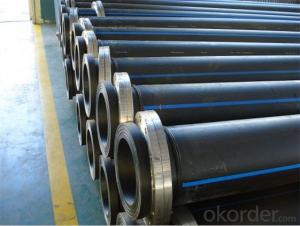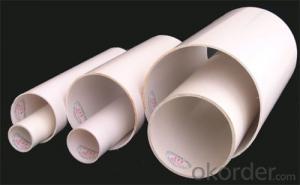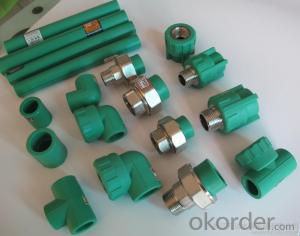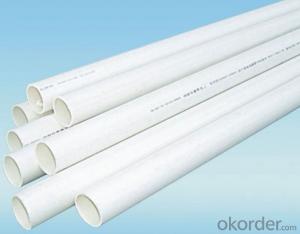Plastic Fuel Pipe Fittings PE Reducer Plastic Pipe Fittings for Pipeline System
- Loading Port:
- China main port
- Payment Terms:
- TT or LC
- Min Order Qty:
- 100 m
- Supply Capability:
- 10000 m/month
OKorder Service Pledge
OKorder Financial Service
You Might Also Like
PE Reducer Pipe Fittings for Pipeline System
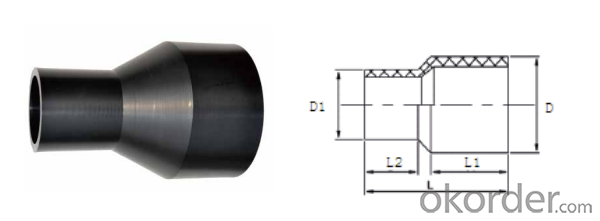
Pressure grade:
PN≤1.6MPa when DN<400MM
PN≤1.0MPa when DN≥400MM
Size: DN125MM-DN630MM
Specification:

We own three industry bases for manufacturing pipes, fittings and new materials, including the biggest production line of steel wire reinforced PE composite pipe in the world, and top advanced PE pipe production line.
We get long term cooperation with leading material suppliers in the world and professionally provide the pipeline system solutions of matched products and technical cases by the whole industry chain from materials R&D to pipeline engineering installation.
- Q: Can plastic pipe fittings be used for water treatment systems?
- Yes, plastic pipe fittings can be used for water treatment systems. They are commonly used due to their corrosion resistance, durability, and ease of installation. However, it is important to ensure that the plastic material used is compatible with the specific water treatment chemicals and processes being employed.
- Q: Can plastic pipe fittings be used in HVAC systems?
- Yes, plastic pipe fittings can be used in HVAC systems. Plastic fittings are commonly used in HVAC systems as they are lightweight, durable, and resistant to corrosion. They are also easy to install and can provide a cost-effective solution for various HVAC applications. However, it is important to ensure that the plastic fittings used are specifically designed and rated for HVAC use to ensure proper performance and compatibility with the system.
- Q: Are plastic pipe fittings resistant to water hammer?
- Yes, plastic pipe fittings are generally resistant to water hammer due to their flexible and durable nature, which helps absorb the shockwaves caused by sudden changes in water flow.
- Q: Are plastic pipe fittings resistant to impact damage?
- Yes, plastic pipe fittings are generally resistant to impact damage. They are designed to withstand various levels of force and impact, making them durable and less prone to damage compared to other materials. However, the level of impact resistance may vary depending on the specific type and quality of the plastic used in the fittings.
- Q: Are plastic pipe fittings resistant to fungal and bacterial growth?
- Yes, plastic pipe fittings are generally resistant to fungal and bacterial growth. Plastic materials such as PVC (polyvinyl chloride) or CPVC (chlorinated polyvinyl chloride) used in pipe fittings are inherently resistant to the growth of fungi and bacteria. Additionally, plastic fittings are non-porous and provide a smooth surface that discourages the accumulation of organic matter, making them less susceptible to microbial growth compared to other materials like metal. However, it is important to note that proper maintenance, regular cleaning, and adherence to recommended usage guidelines are crucial to maintain the microbial resistance of plastic pipe fittings.
- Q: How do you repair plastic pipe fittings?
- To repair plastic pipe fittings, you can use various methods depending on the type and severity of the damage. Some common approaches include using epoxy putty or adhesive to fill cracks or leaks, using a pipe repair clamp or compression fitting to seal damaged areas, or replacing the entire fitting if it is beyond repair. It is important to assess the specific issue and choose the appropriate repair method accordingly.
- Q: Are plastic pipe fittings suitable for hydronic heating systems?
- Yes, plastic pipe fittings are suitable for hydronic heating systems. Plastic pipe fittings, such as those made from PEX (cross-linked polyethylene) or CPVC (chlorinated polyvinyl chloride), are commonly used in hydronic heating systems due to their durability, flexibility, and resistance to corrosion. These fittings are also easy to install and can handle the high temperatures and pressures typically found in hydronic heating systems.
- Q: Can plastic pipe fittings be used in above-ground applications?
- Yes, plastic pipe fittings can be used in above-ground applications. They are commonly used in plumbing and irrigation systems for both residential and commercial purposes. Plastic fittings are lightweight, durable, and resistant to corrosion, making them suitable for outdoor installations. However, it is important to ensure that the specific type of plastic used is suitable for above-ground applications and complies with relevant building codes and regulations.
- Q: How do you connect plastic pipe fittings to PVC pipes?
- To connect plastic pipe fittings to PVC pipes, you can use solvent cement specifically designed for PVC pipes. First, clean the ends of both the plastic pipe fittings and PVC pipes to ensure they are free from dirt and debris. Then, apply the solvent cement to both the pipe fittings and the pipes. Insert the pipe fittings into the PVC pipes, making sure they are aligned properly. Allow the solvent cement to dry as per the manufacturer's instructions. This will create a secure and watertight connection between the plastic pipe fittings and PVC pipes.
- Q: How do plastic pipe fittings compare to polybutylene fittings?
- Plastic pipe fittings and polybutylene fittings have some similarities, but there are important differences to consider. Plastic pipe fittings are typically made of PVC or CPVC materials, which offer good durability and resistance to chemicals. They are widely used in various applications, including plumbing, irrigation, and industrial systems. On the other hand, polybutylene fittings are specifically designed for use with polybutylene pipes, a type of plastic pipe that was commonly used in the 1970s-1990s but faced issues with leaks and failures due to the degradation of the material over time. As a result, polybutylene fittings are less commonly used today and are generally not recommended for new installations. In summary, plastic pipe fittings are a more reliable and widely used option compared to polybutylene fittings.
Send your message to us
Plastic Fuel Pipe Fittings PE Reducer Plastic Pipe Fittings for Pipeline System
- Loading Port:
- China main port
- Payment Terms:
- TT or LC
- Min Order Qty:
- 100 m
- Supply Capability:
- 10000 m/month
OKorder Service Pledge
OKorder Financial Service
Similar products
Hot products
Hot Searches
Related keywords


